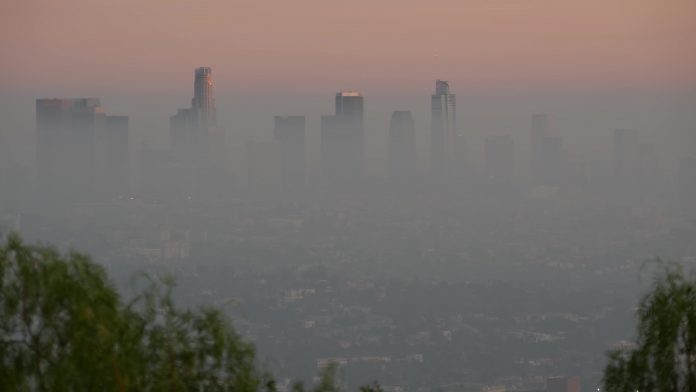In an interview with Open Access Government, the U.S. Environmental Protection Agency’s Tim Carroll offers a fascinating insight into the current and future state of U.S. air quality
Air quality varies from year to year despite the continuing decline of human-caused emissions. Variations in weather, impacts of climate change, and events such as dust storms and wildfires can impact air quality in affected areas. That being said, air pollution and air quality in the United States has significantly improved over the last 50 years.
The Clean Air Act, a landmark piece of legislation, has led to significant environmental and public health benefits across the U.S., particularly through the use of science and technology. According to the Environmental Protection Agency’s (EPA’s) recent 2021 Air Trends Report, since the passage of this act in 1970, the combined emissions of six key pollutants dropped by 78%, while the U.S. economy remained strong – growing 272% over the same period.
Here, we learn more about both indoor and outdoor air pollution from Tim Carroll, Deputy Press Secretary of the EPA.
Tell us how EPA works with governments to reduce air pollution and the damage that it causes.
EPA’s Regional offices work regularly with our state, local, and tribal partners on important air quality protections. For example, the Clean Air Act requires EPA to set National Ambient Air Quality Standards
(NAAQS) and EPA then works with areas and governments to attain and maintain the standards set. Find more information about implementation of National Ambient Air Quality Standards here.
What are some of the outdoor and indoor air pollution challenges facing the U.S. in 2021 and beyond?
The quality of our indoor air can vary greatly depending on potential sources of indoor air pollution which can include:
- Biological pollutants such as mould, viruses, bacteria, pest droppings.
- Volatile organic compounds like pesticides, aerosols, fumes from building materials and other household products.
- Combustion actives such as smoking, cooking, and use of fireplaces or other unvented heaters.
- Carbon monoxide.
- Radon.
- Outdoor pollutants that come inside, and more.
Increasing public awareness is the key to better indoor air quality and health protection. With the COVID-19 pandemic, awareness of IAQ issues has increased as improved ventilation and filtration are increasingly recognised as components of a layered risk reduction strategy to reduce airborne transmission of the disease.
However, several challenges remain. Some stakeholders (e.g., building tenants) have limited control over their indoor environments at home and/or at work. For them, some mitigation measures to reduce exposure to indoor contaminants are not feasible. Indoor contaminant mitigation measures, such as improved ventilation or portable air cleaners, are not affordable for many and this can result in disproportionate impacts for certain populations.
In the future, climate change may worsen existing indoor environmental problems and indoor air quality, and it may also introduce new problems. For example, increased precipitation and storm severity can lead to humidity and mould growth indoors. Droughts and wildfires can cause dust and smoke events that pollute indoor air. Extreme temperatures and flooding can drive pests indoors. Weatherising (sealing and insulating) homes and buildings to offset outdoor temperature changes and to help save energy without maintaining proper ventilation can cause a build-up of unwanted pollutants indoors. Lastly, power outages may occur with more frequent extreme weather, making it more difficult to maintain comfortable indoor temperatures and healthy indoor air quality.
EPA is constantly staying up to date on the latest scientific information regarding these types of indoor air pollutants, and we update our guidance on how to best face these challenges as needed.
Additional information can be found below:
• Indoor Air Quality and Climate Change.
• Primary Causes of Indoor Air Problems.
Why has EPA recently revised and strengthened the Cross-State Air Pollution Rule (CSAPR)?
This rulemaking responds to a September 2019 ruling by the United States Court of Appeals for the D.C. Circuit, Wisconsin v. EPA, which remanded the 2016
CSAPR Update to EPA for failing to fully eliminate significant contribution to nonattainment and interference with maintenance of the 2008 ozone NAAQS from these states by downwind areas’ attainment dates.
This action fully resolves 21 states’ remaining “good neighbour” obligations under the 2008 ozone NAAQS. For nine out of the 21 states for which the CSAPR Update was previously found to be only a partial remedy (Alabama, Arkansas, Iowa, Kansas, Mississippi, Missouri, Oklahoma, Texas, and Wisconsin) projected 2021 emissions do not significantly contribute to nonattainment or maintenance problems for the 2008 ozone NAAQS in downwind states. Thus, no further emission reductions beyond those under the CSAPR Update are required for these states to address interstate air pollution under the 2008 ozone NAAQS.
For the 12 remaining states (Illinois, Indiana, Kentucky, Louisiana, Maryland, Michigan, New Jersey, New York, Ohio, Pennsylvania, Virginia, and West Virginia), projected 2021 emissions were found to contribute at or above a threshold of 1% of the NAAQS (0.75 ppb) to the identified nonattainment and/or maintenance problems in downwind states. After further analysis of emission-reduction potential, cost-effectiveness of controls, and downwind air quality improvement, EPA determined additional emission reductions relative to the CSAPR Update was necessary from all 12 of these states.
The new requirements for the 12 states to make further emission reductions took effect on June 29, 2021, which is 60 days after publication of the notice of final rulemaking in the Federal Register. This date is falls before the July 20 serious area attainment date for the 2008 ozone NAAQS. This will enable improvements in three downwind ozone and associated public health benefits by the 2021 ozone season.











